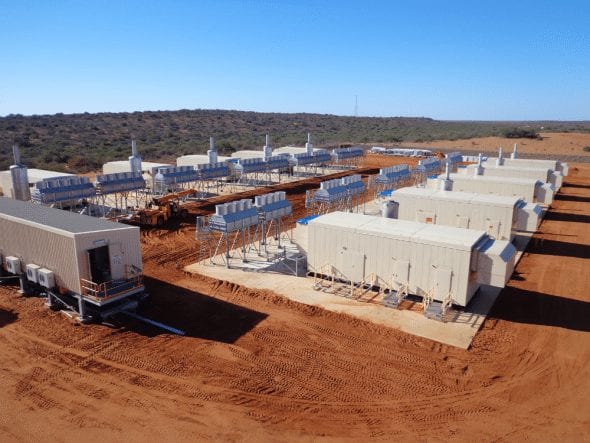WA utility Horizon Power is set to trial the use of large-scale battery storage to meet peak power demand – acting as an alternative to fossil fuel-generated “spinning reserve” – after two batteries capable of delivering up to 2MWh of power arrived in the coastal town of Carnarvon.
In a first-of-its-kind trial for the state, the two 1000kW batteries housed in two 40 foot containers will be connected to the 170MW Mungullah Power Station and used to store energy produced by that station with the primary function of providing back-up power for the islanded power station.

The batteries – provided by Chinese company, Tianjin Lishen Battery – will be tested to see if they can rapidly provide energy in the event of a spike in demand or if an existing back-up generator stops running, potentially saving hundreds of thousands of dollars a year in fuel and maintenance costs.
It’s a function that would have been useful two years ago, when a category three cyclone tore through Exmouth, Coral Bay and Carnarvon leaving blackouts in its wake – a situation Carnarvon Shire president Karl Brandenburg described as “critical” for the town’s 9,000-odd people.
By comparison, the nearby Thevenard Island was kept in power, thanks to its then relatively new solar-hybrid mini grid that not only survived the storm, but continued running throughout, on stored battery power.
“We have a clear aim to embrace new technology and drive the increased uptake of distributed energy and the capability of microgrid technology,” said Horizon Power managing director Frank Tudor on Wednesday.
“The use of (the Carnarvon) battery storage unit means that the cost of providing spinning reserve to supply electrical power for Carnarvon will be significantly reduced as we will be using stored battery energy rather than gas or diesel to provide reserve power,”
Project director Brett Whisson said the trial also aims to investigate how battery storage might be able to support the installation of more distributed renewable energy in the region, which already has one of the highest penetration levels of all of Horizon’s islanded networks, with 121 individual PV installations totalling 1.3MW in capacity.
More specifically, says Horizon, the is a first step towards meeting its commitment to incorporating renewable energy into the 17MW Mungullah Power Station.
This article was originally published on RE sister site, One Step Off The Grid. To sign up for the weekly newsletter, click here.








